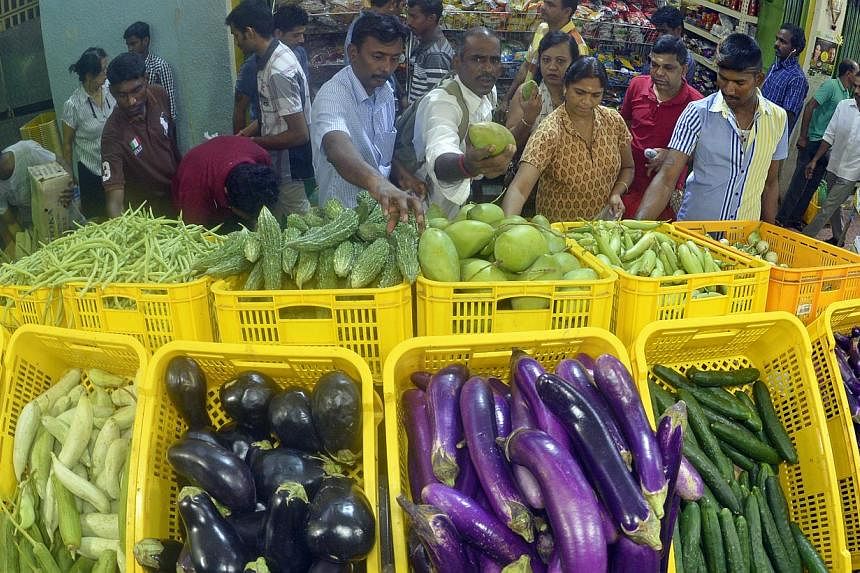The prices of some vegetables at wet markets here have gone up by as much as 60 per cent, as floods devastate crops on Peninsular Malaysia's east coast, affecting their supply to Singapore.
Malaysian vegetables that cost more include cai xin, Chinese spinach, brinjal, cucumber and chilli.
At a wet market stall in Yew Tee, Malaysian brinjals now sell at $5 per kg, up from $3.50 per kg in the middle of last month, when the massive floods began. At another stall in Serangoon, Malaysian cucumbers now cost $1.60 per kg, up from $1.
Singapore imported 226,500 tonnes, or 44 per cent, of its vegetables from Malaysia in 2013, according to the latest figures from the Agri-Food and Veterinary Authority. China (26 per cent) and India (6 per cent) are also major suppliers.

The prolonged rainy season in Malaysia has caused a supply drop in the country of between 30 per cent and 40 per cent, The Star newspaper reported, quoting Mr Chong Tek Keong, treasurer of the Federation of Malaysian Vegetables Wholesalers Association.
This means reduced supply for Singapore, as suppliers in Malaysia need to serve their local market first, said Mr John Chia, 52, a wholesaler in Singapore."They then increased prices by at least 20 per cent," said Mr Chia, who owns JnJ Vegetable Suppliers.
For vegetables that make it to Singapore, some have to be thrown away as water-logged greens tend to rot faster, said Mr Law Song Nam, vice-chairman of the Singapore Fruits and Vegetables Importers and Exporters Association.
Despite the supply fall, prices at supermarket chains here, such as NTUC FairPrice, Cold Storage, Giant and Sheng Siong, have so far remained the same.
Said a spokesman for Sheng Siong: "Through procuring from multiple sources, we try as much as possible not to adjust the retail prices of fresh vegetables."
Large retailers also usually have contracts with vegetable wholesalers on a fixed-price basis.
The bad weather has also put a dampener on fish supplies, as fishermen keep their boats moored. Prices of Malaysian fish have inched up about 10 per cent, said the Singapore Fish Merchants General Association.
The good news is that prices of Malaysian produce are expected to return to normal levels by Chinese New Year next month, as weather conditions in Malaysia improve and importers here switch to alternative sources, said Mr Law.
Malaysia's Meteorological Department has said that the weather is gradually improving in Kelantan, Terengganu and Pahang.
Some consumers such as Mr V. Balakrishnan, who was spotted shopping for vegetables yesterday, are not put off by the price hike. "Yes, prices have gone up, but not by that much," he said. "It's only a few cents, we won't be cutting down."

